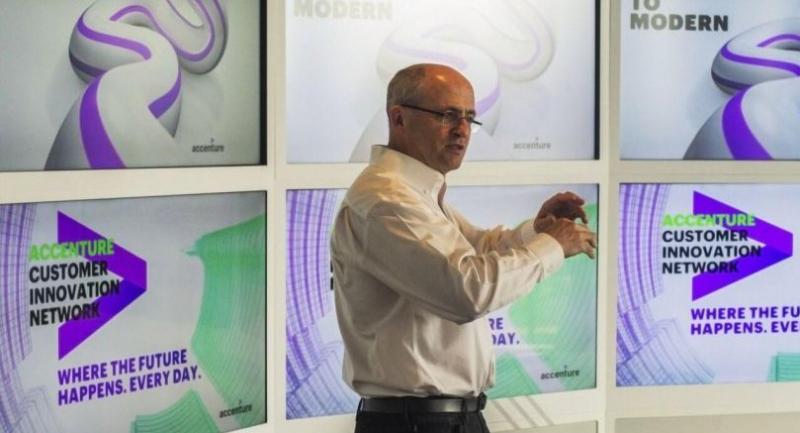New tech opens frontiers in branding

DRAWING ON NEW advancements in technology, successful brands will create new ways to serve their customers and organise their companies, according to John Zealley, senior managing director and global lead of consumer goods and service for Accenture Group.
Accenture is a global professional services company that provides services covering the realms of strategy, consulting, digital, technology and operations.
“Currently, big corporations face the same problem, which is how to drive their business growth when most of them are facing low growth and low margins. They have to find the way to drive their business through aggressive growth. Technology answers that question for their business, because it has the ability to drive their business growth,” Zealley said at press visit at the Accenture Customer Innovation Network (ACIN) in Milan, Italy last week.
For example, Procter & Gamble Co modernised its business by developing its logistics and supply chain to manage its cost to boost net margin. Tesco has rebalanced the relationship between its retailers and brand to better serve clients and redefine the beneficial relationship with its customers.
Currently, brands need to be strong in communicating their benefits and retailers need to be strong in creating environments that create customer engagement.
Zealley said that in the year 2006, big global brands were doing well because of their brand and business models, including tax and production models. But in 2016, old global brands were not performing well and older models were no longer working and their performance dropped from high to average or low.
This fall came from the “big bang” disruption caused by Amazon’s invasion through new online channels. Consumer products, goods and services have to modernise their business to recover for the long term.
A survey by Accenture found that brands still important to customers, with 78 per cent of customers sampled were seeing brands as important, but most customers also expect more from brands.
These expectations can be sorted into three categories. First is desire, made up of health and welfare, a social footprint and experiences. Second is decide, related to fragmentation, brand switching and peer influence. Finally, delight reflects personalization, relevance and authenticity.
So brands need to be where consumers are – online, offline and everywhere from their home to online experience, Zealley argued.
Brands must access the total ecosystem and understand the everyday lives of their consumers. They must define their roles in that channel and at that moment in the lives of their consumers.
“If customers use Uber, Netflix, Airbnb, Amazon, or social media ... how can we best serve them in the channels your consumers are using, when they want, and the way they want?” he asked.
New consumers are more willing to exchange information with the brands for a better experience.
In days past, technology used to be used to support the back office systems, like logistics. But today, mobiles, augmented reality and social media allow brands to be more engaging with their consumers. At the same time, technology has also become both the front office interface and the brand differentiators with customers, a major change from the past, Zealley added.
Today there is no one-size-fits-all model that reflects scalability, but instead more personalised prescription that fit the needs of an individual.
Brands today must implement new ways to quickly engage with customers, then fail, learn, fix and start again. In this “move to modern”, brands need to look for value and follow the money. All of this needs to be supported by intelligence from data and analytics, he said.
Another key is vitality, creating a “living business”, with omni-channel communication and faster innovation to offer a wider choice of customer experiences.
Finally, agility is essential, ensuring efficiency in all value chains, through modern enterprise and modern IT.
The agile approach supports diverse brand portfolios with more components, different services and delivery points, he said.





